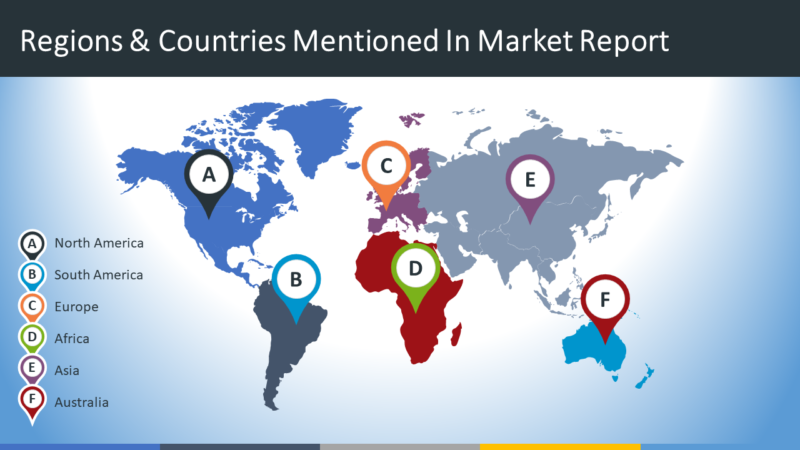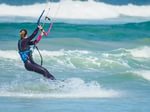show chapters
MaiTai started as a gathering of tech executives who liked water sports. Basically Bill Tai’s network of cool people. In particular, there was a group who would gather at (now Yahoo CFO) Ken Goldman’s house on Maui to wind surf. But in 2000, on a wind- surfing trip to Mexico, Tai was exposed to kiteboarding and from then on he was hooked – and he got everyone else hooked, too! He met professional kiteboarder Susi Mai, and, well, with the names Mai and Tai, they really had no choice but to do something together and these networking events became known as MaiTai. In this Q&A, we got him to spill everything, from why entrepreneurs like kiteboarding to how MaiTai became the “golf course” (i.e., where deals get done) of Silicon Valley and his craziest kiteboarding story. Yup, it’s crazy!
How did Silicon Valley get turned on to kiteboarding and MaiTai?
Somewhere around 2003 or 2004, there were some photos on the Internet of [Google founders] Sergey Brin and Larry Page kiteboarding. And suddenly, the sport started to take off in Silicon Valley. Because I was one of the more visible people in the area, a lot of people started coming to me to learn more about the sport. My network has always been full of interesting start-up entrepreneurs. They all started to consolidating around me and my annual outing. Along the way, I ran out of bandwidth to train my friends. I reached out to Susi Mai, who is an extremely visible kiteboarder – she was the winner of Red Bull’s King of the Air contest three years running. And, it just so happened that our names rhymed! I basically sent her an email and said, “Hey, Susi – Together our names spell MaiTai. We need to do something on it!” I never officially named it that – but people just started referring to these gatherings as MaiTai. It was mind-blowing to me – it took on a life all its own!
Read MorePushing the limits: How to get through a 100-mile race
It became a community that had all of the elements of an open-source movement — like Linux or any of these technology open-source movements. In this case, the community is made up of extreme athletes, innovators and entrepreneurs and investors that live life hard. It’s a group of people who like to push their limits in work and play every day of their lives.
Who gets invited to MaiTai – is it just the Richard Bransons and Bill Tais of the world? And how do you get invited? (Asking for a friend.)
If there are criteria, it has nothing to do with net worth. It has more to do with who the person is and can they add something to the community? It’s more — if you were to have dinner and, say, talk to that person for an hour, would you come away thinking, “Wow, I learned something today from a really cool person?” If the answer is “yes,” they are the kind of person who would get invited.
But yes, I am flooded with emails from people around the world who hear about it and see user-generated content about it (we never produce any content) and say, “Hey, I’d like to sign up for MaiTai!” [You can’t. It’s invite only.]
Does the investor in you sometimes say – maybe we should make this thing bigger and open to the public because it could make a lot of money?
For me, it’s not that. The focus has never been money. It’s been about building a community of really interesting people who make life fun and exciting every day. That’s worth infinitely more than money to me and everyone else in the community.
How is kiteboarding like starting a business? Is there a fear factor?
There are a lot of parallels to participating in either kiteboarding or a start-up company. The kind of person who’s drawn to either is somebody who is unafraid of operating in a very dynamic, rapidly-changing environment. It’s having to learn things that are unwritten. You can’t read a book and start a company. You can’t read a book and be a kiteboarder. You just have to try.
The person who survives either is also somebody who is resilient and quick to recover from failure. Start-ups are organizations that are constantly changing and adapting to an environment and literally failing 99 percent of the time. You recover and go on to some small successes. Then you string together those small successes into a big one.
Read MoreDial-a-Dolphin: NFL pro moonlights as Uber driver
In kiteboarding, every day you’re getting battered – but you keep at it, waiting for that moment when it all comes together for just a few seconds. You feel like you’re on the top of the world.
[Entrepreneurs] know that they’re going to accept a fair amount of punishment for that small shot of glory. And they’re willing to do it. They thrive on it.
How has MaiTai become the golf course (i.e., where deals get done) of Silicon Valley?
People definitely refer to kiteboarding as the new golf. What they’re referring to is more the community element. The fact that deals get done in the down time.
Kiteboarding is such an intense sport, you can’t be kiting all the time. Very few people can kite for more than tens of minutes. There’s ample time to engage with other people either when you’re rigging, resting or de-rigging. And you share a common experience. People will sit on the beach and talk about what happened. Everybody can understand because they’ve been in each other’s shoes.
Kiteboarding is a sport where, because it’s so hard to do, no matter who you are or how good an athlete you are, you will fail when you first start. You will fail a lot. Kiteboarding is a very humbling experience. As a result, it becomes a very strong support group. Everybody is trying to help each other. Failure can be treacherous. While there aren’t a lot of people who’ve died kiteboarding, there are some. It builds a spirit where everyone’s looking out for each other in a very deep way. It’s like Special Forces training – you’re caring for anyone who’s in your tribe! It’s deep bonding – it allows people to engage at a level they wouldn’t ordinarily get just leading someone in a meeting.
Read MoreLeBron James vs. Stephen Curry: Who wins for marketers?
I’ve funded many an entrepreneur who’s come up through MaiTai. You get to really know people. There’s a big difference in understanding who an entrepreneur is while they’re going through something so hard. How they learn. How they recover from failure. How they handle stress.
It’s a very different experience than just having someone pitch you a PowerPoint presentation!
I’ve seen people not handle it so well… You can tell a lot about someone by the way they handle failure. Especially when it’s 99 percent of the time!
What are some of the coolest deals to come out of MaiTai?
I was able to engage with the co-founder of [mobile-messaging service] Tango.me at its founding. They recently raised money at a $1.5 billion valuation. Yes, we’ve had several “unicorns” here! [Australian design firm] Canva, whose chief evangelist Guy Kawasaki was originally chief evangelist at Apple, was born at MaiTai. Scott Painter hired some of his original TrueCar team off of a MaiTai event. The big data company Treasure Data came out of MaiTai. And [messaging app] Voxer had a product launch at MaiTai.
A lot of very dynamic entrepreneurs who hear about MaiTai seek me out. The No. 1 source is word of mouth. Entrepreneurs hear about it through other entrepreneurs. They want to be part of the movement, part of the community.
Is there a screening process for inviting people?
Yes. There is a group of people that is sort of the core – they’ve been around for a long time. They really understand our community and our ethos. Anyone who’s interested goes through a little bit of a screening process with them. They’ll look at their bio and try to understand the person and what they’re working on. Then, if they look interesting, they’ll do a video call with one or more of the people who’ve been around for a while. If they pass that sniff test, they get invited to one of our functions. If people like them, they get invited to more functions. Bigger functions.
Tell us your craziest kiteboarding story
I was out with a guy, who is today the chief strategy officer at Samsung. I had just convinced him to learn kiteboarding. I wanted to go kite under the Golden Gate Bridge. So, we went to Crissy Field. But there are massive currents under the Golden Gate Bridge – I wasn’t thinking that he’d only been kiting for a year. He went right into the wind shadow and his kite falls out of the sky. He drifts … then relaunches. He’s yanked through the air I don’t know how many feet and his board got ripped away from him. … I’m watching all of this and thinking, “I really should’ve told him!” Then, I thought, “OK, I’m going to go in there and try to get the board.” It took my kite into the same zone. I get sucked out to sea … One other kiter who was out there that day saw my kite go down and followed me out. He called the Coast Guard. … They managed to fish me out. But I was spun around so many times, my legs were tied together and I couldn’t stand up. … I had a camera tied around my neck … I looked up and saw these three Coast Guard people … so I took their picture! They thought I was nuts! … It wasn’t until months later that I realized I could’ve died. I’m a very calm person.
Just Google “Bill Tai rescued by the Coast Guard …”
Q&A with Bill Tai, a venture capitalist and entrepreneur who co-founded MaiTaiGlobal.org with Susi Mai. Originally trained as a computer chip designer, Tai has served on the board of seven publicly-listed companies he initially funded as start-ups, including Internet infrastructure operator iAsiaWorks, which he founded as CEO. He co-founded both IPInfusion, the leading provider of Linux-based routing software and Treasure Data, a Hadoop-based “big data” platform, as chairman. He also serves on the Tech Pioneer Committee of the World Economic Forum. Follow him on Twitter @kitevc.
From flying off a mountaintop in a wingsuit to nailing a triple back motorcycle flip or kiteboarding 40 feet in the air, extreme sports are starting to catch some serious air. Tune in Thursday, June 18 at 10pm ET/PT to get a sneak peek inside MaiTai in the CNBC documentary, “The New High: Extreme Sports.” In the clip below, host Carl Quintanilla gets a crash course (alas, literally) in kiteboarding.
show chapters
![]()





Recent Comments